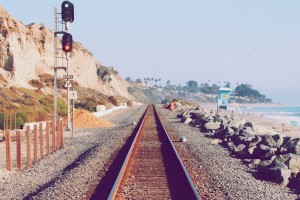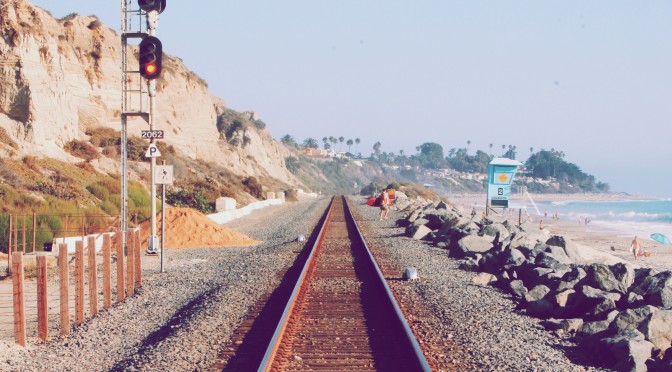 I’ve written extensively about how important it is to keep our children safely and properly restrained in car seats, in order to maximize their odds of surviving car collisions. In the United States, the leading cause of death for children between the ages of around 1 and 14 are car collision-related trauma, or car accidents. We can increase the likelihoods of keeping our kids safe in cars, SUVs, minivans, and pickup trucks of all sizes by rear-facing as long as possible, forward-facing as long as possible, and using booster seats until our kids pass the 5-step test. This is the meat and potatoes of this blog. However, our kids don’t simply travel in private vehicles. Sometimes we choose to take taxis, buses, airplanes, and trains. How do we keep our kids safe in those?
I’ve written extensively about how important it is to keep our children safely and properly restrained in car seats, in order to maximize their odds of surviving car collisions. In the United States, the leading cause of death for children between the ages of around 1 and 14 are car collision-related trauma, or car accidents. We can increase the likelihoods of keeping our kids safe in cars, SUVs, minivans, and pickup trucks of all sizes by rear-facing as long as possible, forward-facing as long as possible, and using booster seats until our kids pass the 5-step test. This is the meat and potatoes of this blog. However, our kids don’t simply travel in private vehicles. Sometimes we choose to take taxis, buses, airplanes, and trains. How do we keep our kids safe in those?
This is the start of a series on keeping kids safe in alternative means of transportation. Today’s focus will be on safe train travel with kids.
How safe are trains compared to cars?
Many parents have asked me over the years about the safety of trains and how to keep their children protected when they have to use them. They’re often already familiar with what I advocate regarding car seat use, safe driving techniques, and safe vehicle choices. However, they don’t know to what degree any of this is applicable to train travel. The good news is that trains are among the safest forms of transportation we have available. The USDOT Bureau of Transportation Statistics states 11 people died on trains (both freight and passenger railroads) in 2013. In comparison, 22,383 people lost their lives that year traveling in motor vehicles, per the NHTSA’s Fatality Analysis Reporting System. Furthermore, per the National Safety Council,
The risk of dying per mile in a passenger vehicle in 2012 was 24 times higher than when traveling as a passenger in a train. To put it simply, it’s much, much safer to travel by train than it is to travel by car, van, SUV, or pickup truck.
Besides that, it’s a lot more fun to travel by train over long distances for young children and adults, simply because you’re free to walk around throughout most of the journey, and you can spend time focused on each other without worrying about driving. You can also go to the bathroom whenever you want!
Can you use a car seat on a train? Do you need one?
To put it simply, no, and no. Trains don’t have seat belts, which means it’s impossible to securely attach a car seat to a train. The statistics suggest you don’t need one, as do physics.
The sudden deceleration (and resultant inertia) that occur in car collisions are what makes them much more likely to be fatal when restraints aren’t present; the vehicle stops suddenly and people go flying into the vehicle (or out of it) if they don’t have car seats and seat belts to slow them down.
In contrast, because of how incredibly massive trains are, they don’t tend to stop immediately in collisions, but rather to knock things out of their way while slowing down. Similarly, their massive inertia tends to result in their slowing down relatively slowly, giving passengers time to “ride down” collisions. Of course, trains crashing into other trains in head on collisions can produce the instantaneous stops that occur in head on car collisions, but such collisions are very rare (far, far rarer than vehicular collisions).
So no, car seats can’t be installed on trains, but they also aren’t necessary. You’re considerably more likely to die by lightning strike in a given year than you are to die as a train passenger.
What do you recommend for comfortably carrying infants on a train?
Personally, when traveling on trains with very young children (i.e., infants), we prefer baby-wearing. I like my Pognae, and my wife swears by her Maya Wrap ring sling. She does more baby-carrying than I do, so I’d trust her opinion more if you can’t decide between the two. I’d use either over an infant seat; they’re much lighter and take up far less space.
Thanks for the reassurance Mike. But I’m a worrier! Is there anything I can do to keep my kids just a bit safer when traveling by train?
The most dangerous part of a train is actually outside of it. Most people who die in train-related incidents die by entering the path of a moving train, whether at a railroad track (e.g., in a vehicle trying to beat a train) or at a train station (e.g., falling into the path of a train arriving at a station). The best things you can do for your children are to teach them safety rules involving trains and train tracks.
Children should be taught to stay away from train tracks unless they’re holding hands with adults. When on train platforms, they should not be anywhere near the yellow stripe. When driving, activated train gates and lights should always, always be treated as if trains are imminently approaching.
Amtrak offers a number of personal safety tips for travelers both onboard trains and at the train station. They’re worth reviewing with your children before any train trips.
Remember that the train is a safe and enjoyable way of traveling, and it is my hope that the US will invest more in our rail infrastructure to make it possible to reach more areas of the country by rail, especially given how much of a safer mode of transportation it is than the automobile.
—
If you find the information on car safety, recommended car seats, and car seat reviews on this car seat blog helpful, you can shop through this Amazon link for any purchases, car seat-related or not. Canadians can shop through this link for Canadian purchases.


